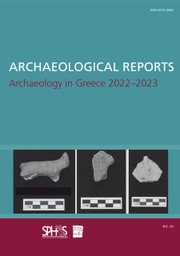Article contents
Votive gifts from Sicily and southern Italy in Olympia and other Greek sanctuaries
Published online by Cambridge University Press: 12 December 2016
Extract
Votive gifts from Sicily and southern Italy are most prominent among the objects discovered in Greek sanctuaries, especially Olympia, the most significant location for such material in Greece. Foreign objects from the west were an early focus of archaeologists working on Olympia (for example Karo 1937; Kunze 1951; Kilian 1977a; 1977b; von Hase 1979; 1997; Herrmann 1983; Moustaka 1985; Kyrieleis 1986; Söldner 1994; Strøm 2000; Naso 2000a; 2000b; 2006; 2011; 2012; Baitinger 2013; Aurigny 2016), in particular spectacular pieces with inscriptions, such as two bronze helmets of the central Italian Negau type (Fig. 84) (Egg 1986: 51–61, 198–99, nos 185–86, pls 108, 109a). The inscription confirms the dedication by Hiero I, the tyrant of Syracuse, following his victory over the Etruscans at the naval Battle of Cumae in 474 BC. As we know from Pindar's victory odes and from monuments dedicated at Olympia, the powerful tyrants of Sicily maintained strong links to the sanctuary (for example Philipp 1992; 1994; Giangiulio 1993; Di Vita 2005; Dreher 2013).
- Type
- Archaeology in Greece 2015–2016
- Information
- Copyright
- Copyright © Authors, the Society for the Promotion of Hellenic Studies and the British School at Athens 2016
- 1
- Cited by




